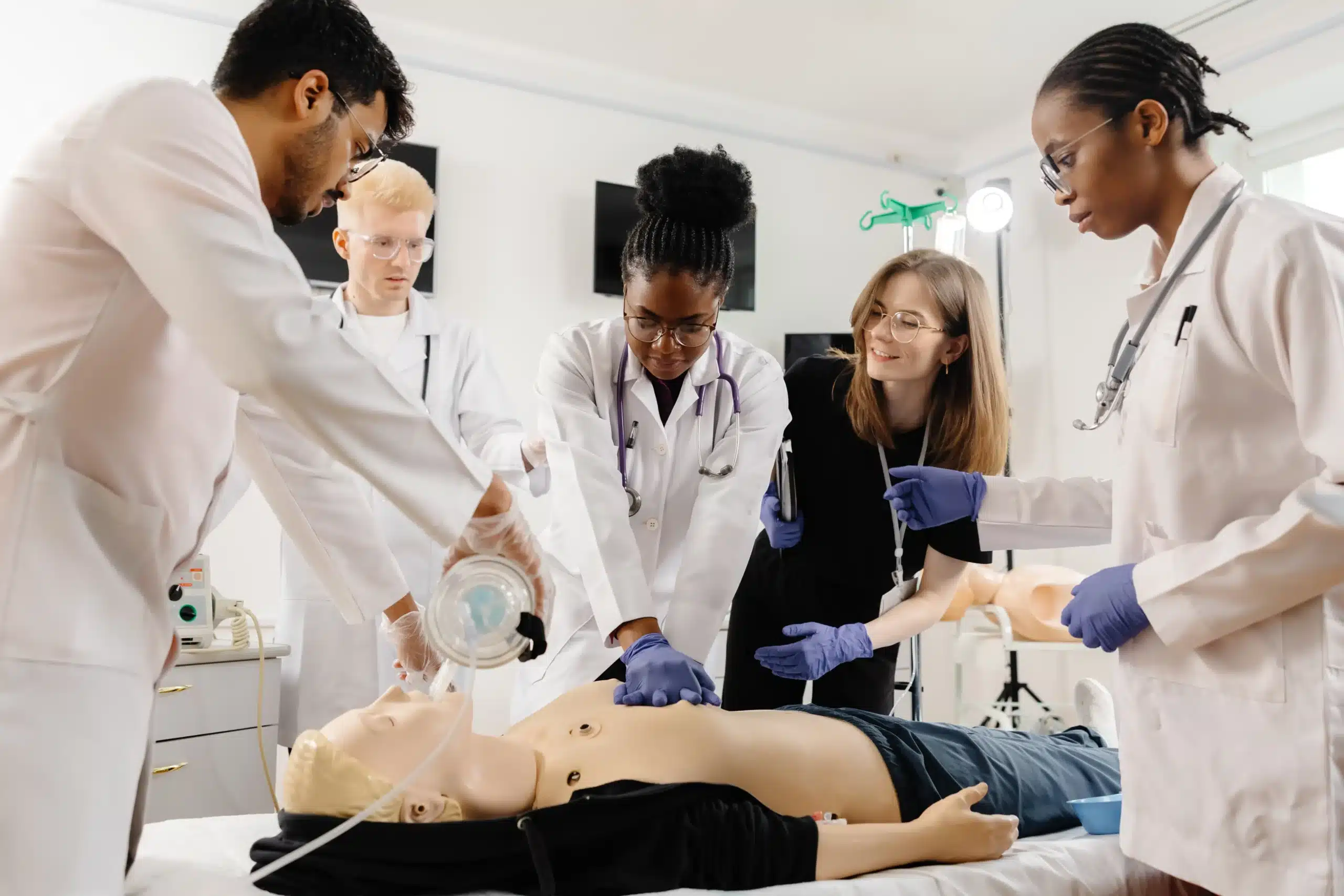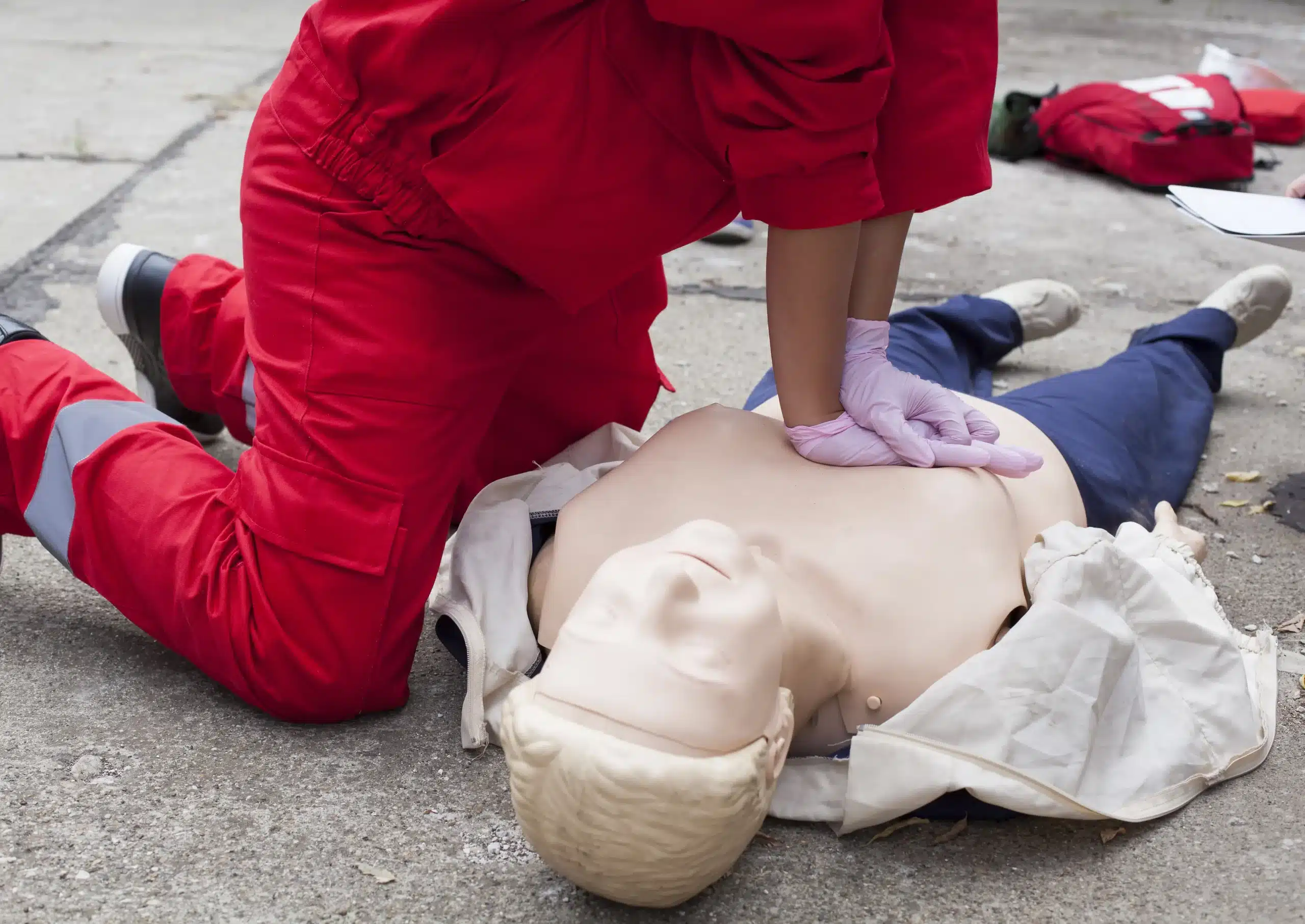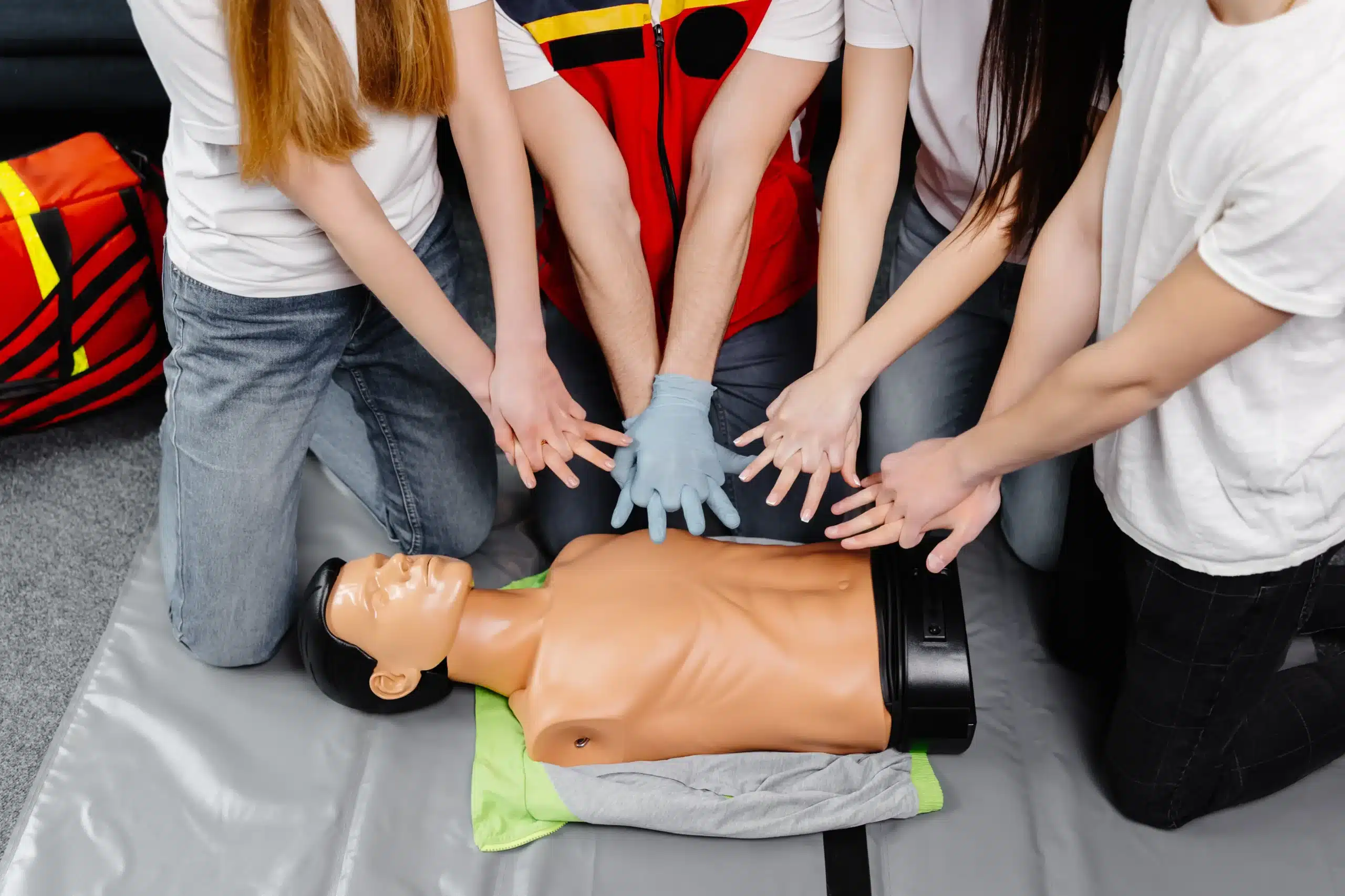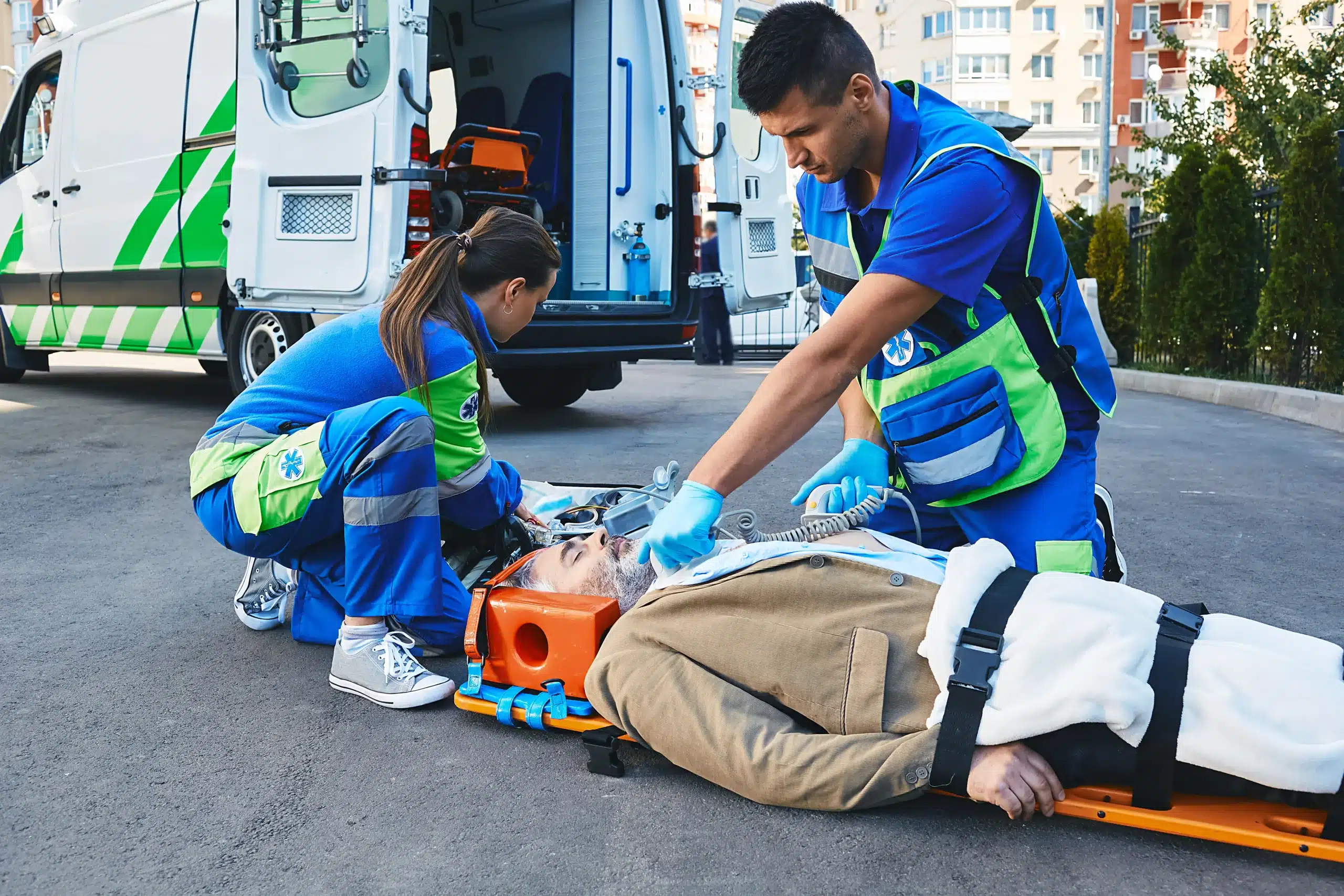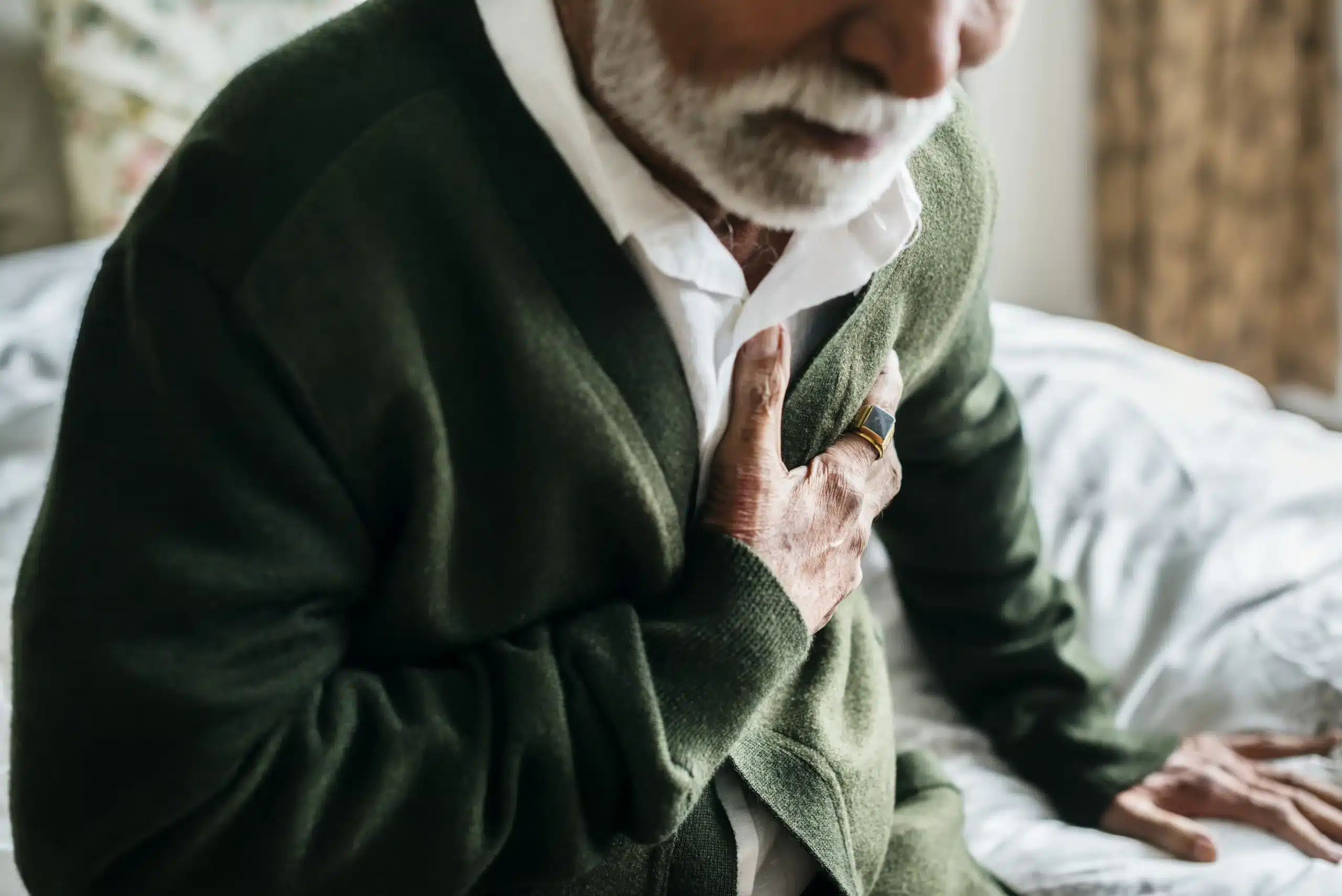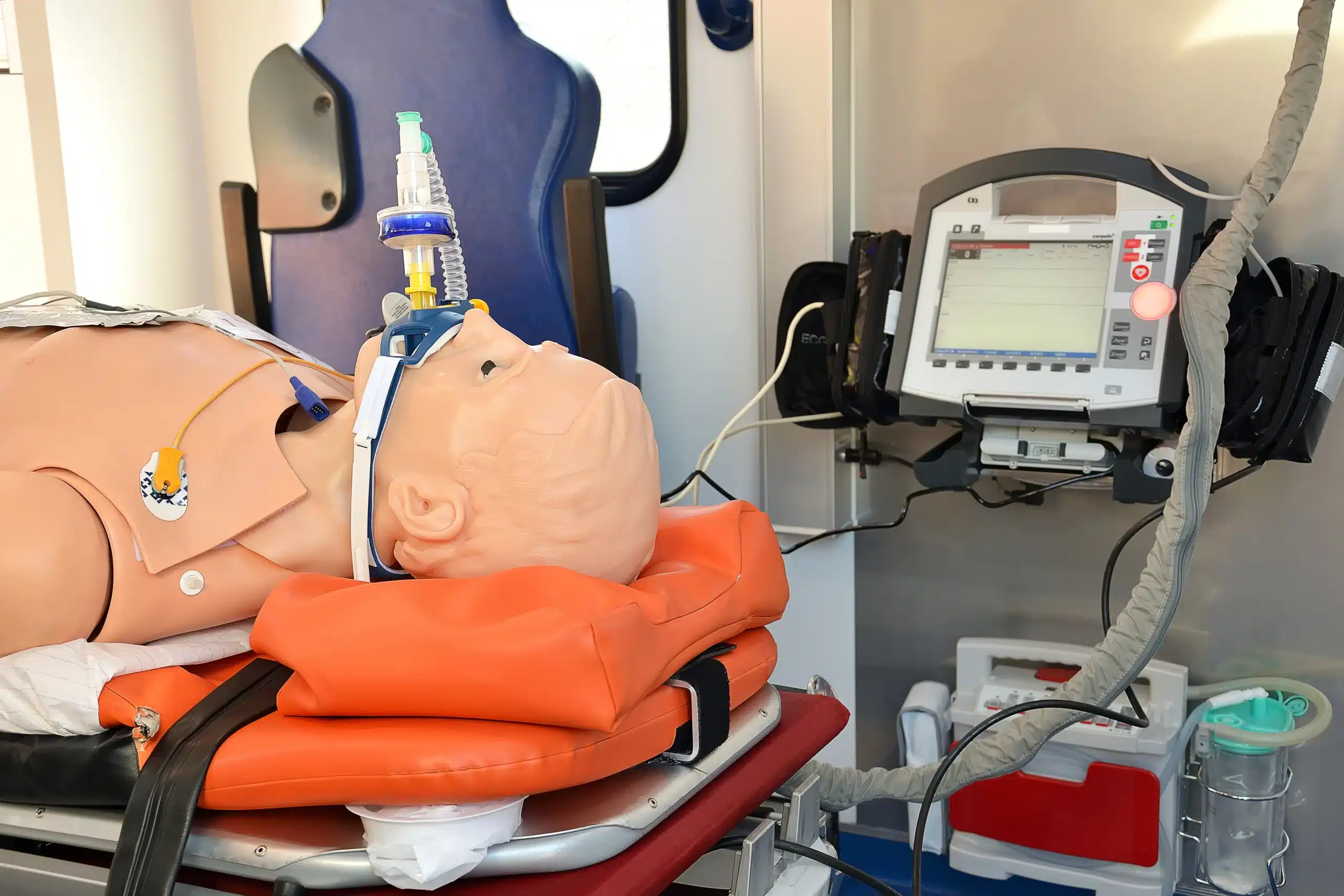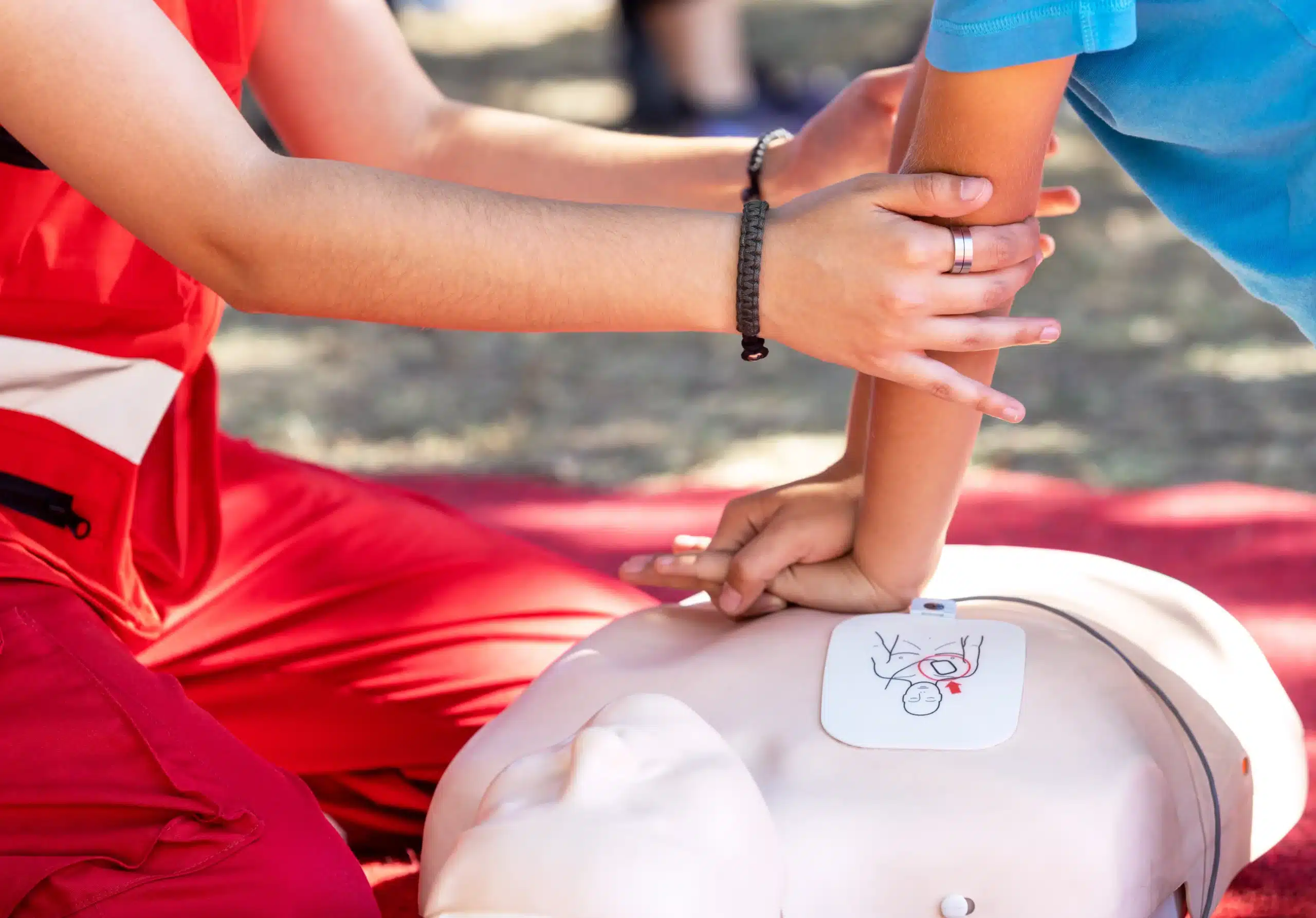Life is full of surprises, and not all of them are pleasant. Knowing how to respond to a medical emergency can transform you from a bystander into a lifesaver. First-aid training provides the skills and confidence to act quickly and effectively in a crisis, providing immediate care that can significantly impact the outcome. This guide explores the essential aspects of first-aid training, from understanding different course types to finding “first-aid classes near me.” We’ll also delve into the benefits of certification, what to expect during training, and how to choose the right training provider for your needs. Let’s equip you with the knowledge and confidence to make a difference when it matters most.
Key Takeaways
- Be prepared for anything: First-aid training equips you with life-saving skills applicable to various situations, from minor injuries at home to emergencies in public spaces. Find the right course to match your specific needs and desired certification level.
- Find the perfect class for you: Consider your schedule, learning style, and budget when choosing a first-aid course. Explore options like in-person training, online courses, or blended learning formats. Reputable providers like Tracy CPR Classes and the American Red Cross offer diverse choices.
- Stay certified and confident: Maintain your first-aid and CPR skills by renewing your certification regularly. This ensures your knowledge remains current and you can respond effectively in a crisis. Consistent practice builds confidence and reinforces your ability to provide assistance when needed.
What are First-Aid Classes?
First-aid classes equip you with the skills to respond effectively to medical emergencies. From minor injuries to life-threatening situations, these courses empower you to provide immediate care until professional help arrives. Whether you’re a parent, caregiver, or simply want to be prepared, understanding the different types of first-aid training available can help you choose the right course.
Basic First Aid
Basic first-aid courses cover essential skills for handling common injuries and illnesses. You’ll learn how to manage cuts, burns, sprains, fractures, and other non-life-threatening conditions. These courses often include training on recognizing and responding to allergic reactions, seizures, and choking. Basic first aid training is valuable for anyone, providing practical skills applicable in various settings, from the workplace to the home. This foundational knowledge empowers you to confidently address everyday injuries and potentially prevent them from escalating. Mainland Safety discusses common first-aid myths and misconceptions, highlighting the importance of accurate information.
CPR and AED Training
CPR (cardiopulmonary resuscitation) and AED (automated external defibrillator) training teaches you how to respond to cardiac arrest and other life-threatening emergencies. You’ll learn how to perform chest compressions, rescue breaths, and use an AED to restore a normal heart rhythm. These skills are crucial for saving lives and significantly improve the chances of survival for someone experiencing cardiac arrest. Often, CPR and first-aid training are combined into a single course, offering comprehensive preparation for various emergencies. Safety Training Seminars offers a range of CPR and first-aid classes in Tracy, CA, catering to different needs and certification levels.
Specialized First-Aid Courses
Beyond basic first aid and CPR/AED training, specialized courses cater to specific needs and professions. These courses delve into advanced techniques and address unique challenges in various environments. For example, wilderness first aid focuses on handling injuries in remote locations, while pediatric first aid equips caregivers with age-appropriate techniques for infants and children. Many training centers offer combined CPR and first-aid courses, allowing you to learn both skill sets efficiently. Specialized courses like the EMSA Child Care Health & Safety course are ideal for California childcare providers, covering essential topics relevant to their profession.
Find Reputable First-Aid Classes Near You
Finding the right first-aid training provider is key to learning accurate and effective life-saving techniques. Here’s how to find reputable first-aid classes near you:
Search Online
Start your search online. Use search engines like Google, DuckDuckGo, or Maps to discover local providers. Search for terms like “first-aid classes near me,” or “CPR training [your city].” Look for providers that offer the specific type of training you need, such as basic first aid, CPR/AED, or specialized courses. A good training provider will have a user-friendly website with clear information about their courses, schedules, and certifications. Check out our Northern CA CPR Directory to find reputable CPR and first-aid classes in your area.
Verify Credentials and Accreditations
Once you’ve found a few potential providers, verify their credentials and accreditations. Reputable organizations, like the American Heart Association and the American Red Cross, offer nationally recognized certifications. Ensure the provider you choose is certified by a legitimate organization and that their instructors are qualified and experienced. A quality training provider will have a clear assessment process to evaluate your progress and offer various learning formats to suit different learning styles. Look for providers who align with industry best practices and hold valid certifications.
Evaluate Reviews and Testimonials
Before committing to a class, take time to read reviews and testimonials from past students. Look for feedback on the quality of instruction, the course content, and the overall learning experience. Positive reviews and testimonials can give you confidence in the provider’s reputation and the effectiveness of their training. You can often find reviews on sites like Google, Yelp, and Facebook. Consider feedback from previous clients when evaluating the quality and credibility of training providers. This research helps you choose a provider that meets your needs and provides high-quality instruction.
How Much Does First-Aid Training Cost?
Knowing the cost of first-aid training is an important part of planning your certification journey. Let’s break down typical expenses, explore ways to save, and emphasize why this investment is invaluable.
Typical Price Ranges
First-aid training costs vary based on several factors. The type of course you take—basic first aid, CPR/AED, or specialized certifications like wilderness first aid—will influence the price. The format of the training (in-person, online, or blended learning) also plays a role. Expect a basic first-aid course to typically cost between $40 and $60 per person. More advanced courses, like those including CPR and AED training, might be slightly more expensive. Check with various training providers in your area, like those listed in our Northern CA CPR Directory, to compare pricing and find the best fit for your budget. Remember, Tracy CPR Classes offers a range of American Heart Association courses at competitive prices.
Discounts and Free Options
While first-aid training is a valuable investment, there are often ways to reduce the cost. Many training centers offer discounts for group registrations, students, or certain professions. Look for promotional offers or seasonal deals. Free CPR and first-aid courses are sometimes available through community organizations or local fire departments. Participating in CERT (Community Emergency Response Team) programs sometimes includes free or reduced-cost training. Check with your local fire department or community centers for these opportunities. Online forums like Reddit can also be a surprising resource for finding free or low-cost training options.
Invest in Life-Saving Skills
Think of first-aid training as an investment in life-saving skills, not just an expense. The ability to respond confidently and effectively in an emergency can make all the difference. For professionals like childcare providers, having these skills is essential for creating a safe environment. First-aid and CPR training equips individuals with the knowledge and confidence to handle medical emergencies promptly and efficiently. This empowers them to potentially save lives. The peace of mind that comes with knowing you can help in a crisis is truly priceless.
Choose a Class Format and Schedule
Finding the right first-aid class means considering several factors, including the format and schedule. Let’s explore the different options available: in-person, online, and hybrid learning. We’ll also discuss what to keep in mind about course duration and scheduling.
In-Person Training
In-person training offers a hands-on learning experience. You’ll work directly with an instructor, receive immediate feedback, and practice your skills in real-time. This direct interaction is invaluable for mastering essential first-aid techniques and building confidence. Tracy CPR Classes offers a variety of in-person courses to fit your needs.
Online Courses
If your schedule is tight, online courses provide flexibility. You can complete the cognitive portion of the training at your own pace. Many providers offer online components, often combined with in-person skills sessions. This blended approach lets you learn the theory online and then demonstrate your skills practically. Check out our Northern CA CPR Directory for providers offering online and blended learning options.
Hybrid Learning Options
Hybrid learning combines online convenience with in-person instruction. You’ll typically complete the coursework online and then attend a shorter, in-person session to practice your skills. This format is ideal for those who prefer a blended learning approach. Tracy CPR Classes’ RQI program is a great example of this flexible learning style.
Course Duration and Scheduling
Course length and scheduling vary depending on the certification. A basic first-aid course might be shorter than a comprehensive CPR/AED or BLS certification. Specialized certifications like ACLS or PALS also have varying durations. Always check with the training provider for specifics. Many offer evening and weekend classes to accommodate busy schedules.
Understand Certifications and Validity
Types of First-Aid Certifications
First-aid certifications aren’t one-size-fits-all. Different situations require different levels of expertise. Basic first aid and CPR/AED training are valuable for everyone, equipping you to handle everyday emergencies. These certifications are helpful for parents, teachers, office workers, and really anyone who wants to be prepared. For those working in healthcare, childcare, or related fields, more advanced certifications are often necessary. These could include Basic Life Support (BLS), Advanced Cardiovascular Life Support (ACLS), or Pediatric Advanced Life Support (PALS), typically offered by organizations like the American Heart Association. Some professions, such as those working with children, may also require specialized certifications like the EMSA Child Care Health & Safety program. Understanding the various certifications available helps you choose the right training. Safety Training Seminars offers various courses to meet these diverse needs.
Renew Your Certification
First-aid and CPR certifications expire, just like driver’s licenses. Most certifications are valid for two years, requiring a refresher course to stay current. This ensures your skills and knowledge remain sharp so you can respond effectively in a crisis. Check with your certifying organization, such as the American Red Cross or the American Heart Association, for specific renewal requirements. Setting reminders or marking your calendar helps you stay on top of your certifications and avoid lapses. Regularly renewing your certification demonstrates your commitment to providing excellent care and maintaining your life-saving skills.
What to Expect in Class
Walking into a first-aid class can feel a little like the first day of school—you’re not quite sure what to expect. So, let’s take a look at what a typical first-aid class covers, so you can feel prepared and ready to learn.
Common Topics Covered
First-aid classes cover the essentials you’ll need to handle a range of emergency situations. You’ll learn how to recognize and respond to everything from minor cuts and burns to more serious injuries like fractures and sprains. CPR is a key component of most first-aid courses, teaching you the life-saving steps to take if someone’s breathing or heartbeat stops. Many courses also include AED (Automated External Defibrillator) training, showing you how to use this device to help someone experiencing sudden cardiac arrest. These skills are especially important for childcare providers, who often face situations requiring quick, decisive action. For those working with children, a CPR and first aid course is frequently a legal requirement.
Hands-On Practice
First-aid isn’t just about memorizing facts—it’s about developing practical skills you can use confidently in an emergency. That’s why hands-on practice is such a crucial part of any good first-aid class. You’ll have the opportunity to practice techniques like bandaging wounds, splinting injuries, and performing CPR on mannequins. Many training providers understand that busy schedules can make it tough to fit in a class, so they offer flexible options like evening and weekend sessions. Programs like RQI often use a blended learning approach, allowing you to complete the cognitive portion online at your own pace and then attend a shorter in-person skills session for hands-on training. This way, you get the best of both worlds: thorough knowledge and practical experience.
Assessment Methods
Just like any other course, first-aid classes have assessment methods to make sure you’re grasping the material and developing the necessary skills. These assessments typically involve practical demonstrations where you’ll show your instructor you can perform the techniques correctly. You might also have a written test to check your understanding of key concepts. The goal isn’t to make you feel stressed, but to ensure you’re confident and competent in your abilities. Plus, studies show that immediate feedback during training, especially using electronic devices, can actually boost your motivation and help you learn more effectively.
Benefits of First-Aid Training
Knowing what to do in a medical emergency can make all the difference. First-aid training equips you with the skills to respond effectively, benefiting not just yourself but also your career and community. Let’s explore these advantages.
Prepare Yourself
First-aid training empowers you to handle emergencies with confidence. Instead of feeling helpless or panicked, you’ll have the skills to assess situations and provide immediate care. This preparedness can be invaluable, whether you’re dealing with a minor injury at home or a more serious incident in public. First-aid training builds the skills and confidence to address these incidents promptly and efficiently, potentially minimizing harm and even saving lives. The peace of mind that comes with knowing you can handle a crisis is a benefit in itself.
Advance Your Career
First-aid certification can be a valuable asset in many professions. For those in healthcare, childcare, or education, it’s often a requirement. Even in other fields, having first-aid certification demonstrates a commitment to safety and can give you an edge. It can open doors to new opportunities or enhance your current role. For anyone working with children, first-aid training is often a legal requirement, making it essential in childcare settings.
Make Your Community Safer
First-aid training doesn’t just benefit you personally—it makes your entire community safer. When more people are trained to respond to emergencies, everyone benefits. You can assist others in need, whether it’s a stranger on the street or a loved one at home. Inclusive first-aid programs ensure training is accessible and effective for diverse learners, further strengthening community preparedness. By investing in first-aid training, you’re investing in the well-being of those around you. This training is crucial for childcare providers, ensuring the safety of children in their care, which highlights the broader community impact of these skills.
Choose the Right First-Aid Class
Not all first-aid classes are created equal. Finding the right one depends on your specific needs, schedule, and learning preferences. Take these factors into account to make the best choice:
Assess Your Needs
Before you start searching for classes, think about why you want first-aid training. Are you required to get certified for your job? Are you a parent wanting to feel more prepared for emergencies at home? Or maybe you’re interested in a healthcare career. Your reason will determine the type of course you need. Some professions, like healthcare, require specific certifications like Basic Life Support (BLS). Knowing your needs helps you narrow your search and find the most relevant training. If you work with children, for example, look for a course that covers pediatric CPR and first aid. CPR and First Aid Certification go hand-in-hand for childcare providers.
Match Your Schedule
Life gets busy, so finding a class that fits your schedule is essential. Luckily, there are tons of options available. Tracy CPR Classes offers flexible formats, including in-person classes, online learning, and blended learning that combines online coursework with in-person skills sessions. Think about what works best for you. If you prefer hands-on learning, an in-person class might be a good fit. If your schedule is packed, an online course could offer the flexibility you need. Many training centers also offer combined CPR and first-aid courses, which can save you time.
Evaluate Course Content
Once you’ve found a few promising classes, take a closer look at the course content. A comprehensive course should include essential topics like CPR, AED training, choking relief, and how to handle common injuries like burns and cuts. If you have a specific area of interest, like wilderness first aid, make sure the course addresses those topics. Also, check the instructor’s credentials. Look for certified instructors with experience in emergency response. A good instructor can make all the difference in your learning experience. Quality first aid training providers will have comprehensive curriculums. Don’t hesitate to ask the training provider questions about the course content, materials, and instructors. Choosing the right first-aid class is an investment in your skills and confidence, so take the time to find the best fit.
First-Aid Training Providers
Finding the right first-aid training provider is crucial for a high-quality learning experience. Several reputable organizations and institutions offer comprehensive first-aid and CPR training. Here are some options to explore:
Tracy CPR Classes
If you’re in or near Tracy, California, Tracy CPR Classes offers a variety of American Heart Association courses, including CPR, First Aid, and specialized training like the EMSA Child Care Health & Safety program. They focus on delivering top-notch instruction and excellent customer service, with flexible scheduling options. Learn more about their BLS certification on their website. They also offer a handy Northern California CPR directory to help you locate training in your area.
American Red Cross
The American Red Cross is a widely recognized provider of first-aid and CPR training. Their courses cater to various learning styles and schedules, with an emphasis on building confidence for responding to emergencies.
American Heart Association
The American Heart Association also offers widely respected first-aid and CPR certifications. You can often find local training centers offering AHA-certified courses through organizations like Safety Training Seminars, which provides instruction in BLS, ACLS, PALS, and First Aid.
National Safety Council
The National Safety Council offers various safety training courses, including first aid and CPR. They equip people with the skills and knowledge to handle emergencies effectively. Explore their resources to find the right course for you.
Local Hospitals and Medical Centers
Many hospitals and medical centers offer first-aid and CPR training to their communities. Check with facilities near you for information on courses and schedules. These courses often combine CPR and first-aid instruction for a streamlined learning experience. Tracy CPR Classes offers a guide to CPR training in the Tracy area, which may include details on hospital-based courses.
Community Colleges
Community colleges frequently offer first-aid and CPR courses at affordable prices, sometimes even for free. Contact your local community college to learn more about their programs. Community resources like libraries and non-emergency services may also have information on low-cost training.
St. John Ambulance
St. John Ambulance is a prominent first-aid training provider in Canada, with a range of courses designed for various groups, from workplaces to community organizations.
YMCA
Many YMCA branches offer first-aid and CPR training to meet community needs. Check with your local YMCA for schedules and registration details.
Local Fire Departments
Local fire departments often provide free or low-cost CPR, AED, and first-aid training to residents. Contact your local fire department to ask about upcoming courses. Online forums like Reddit can also be helpful resources for finding free CPR and first-aid certification opportunities.
Related Articles
- First-Aid Classes in Northern CA: Your Guide – Tracy CPR Classes
- First Aid in Lodi: Find Training & Certification – Tracy CPR Classes
- CPR Training in Tracy: Your Complete Guide – Tracy CPR Classes
- CPR Courses in Tracy: Your Complete Guide – Tracy CPR Classes
- CPR & First Aid in Stockton: Your Guide – Tracy CPR Classes
Frequently Asked Questions
What’s the difference between basic first aid and CPR? Basic first aid focuses on treating common injuries like cuts, burns, and sprains, while CPR addresses life-threatening situations where someone’s breathing or heartbeat has stopped. CPR often involves chest compressions, rescue breaths, and using an AED. Both are valuable skills, but CPR specifically addresses cardiac and respiratory arrest.
How do I choose the right first-aid class for me? Consider your specific needs and goals. If you need certification for a job, ensure the course meets those requirements. If you’re a parent or caregiver, a basic first aid and CPR course is a great starting point. Think about your learning style and schedule. Do you prefer in-person instruction or the flexibility of online learning? Look at course content, instructor credentials, and reviews to find a reputable provider.
How much does first-aid training typically cost? Costs vary depending on the course type, format, and location. Basic first aid courses are usually more affordable than advanced certifications like BLS or wilderness first aid. Look for discounts for group registrations, students, or specific professions. Some community organizations and fire departments offer free or low-cost options.
How long are first-aid certifications valid, and how do I renew them? Most first-aid and CPR certifications are valid for two years. You’ll need to take a refresher course to renew your certification and keep your skills current. Check with your certifying organization (like the American Heart Association or American Red Cross) for specific renewal requirements.
What can I expect during a first-aid class? Expect a combination of instruction, demonstrations, and hands-on practice. You’ll learn essential skills like wound care, CPR, and how to use an AED. Most classes involve practicing techniques on mannequins and participating in simulated scenarios. There’s usually a written or practical assessment to ensure you’ve grasped the material.
